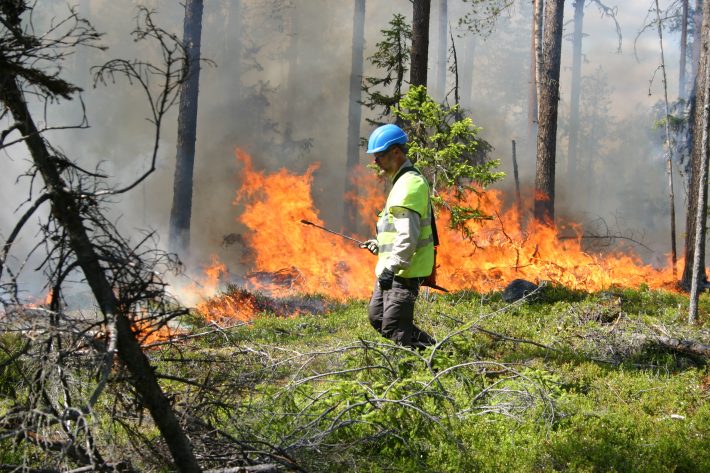Press Release: Conservation measures can increase the risk of bark-beetle damage
Swedish University of Agricultural Sciences Press Release
In many parts of the world, forest restorations and other conservation measures are conducted with the aim of increasing biodiversity. The most common measures are prescribed burnings and mimicking natural small-scale disturbances where dead wood is created (e.g. gap-cuts), which both favours many deadwood dependent species. However, these measures may at the same time increase the risk of forest pest insect outbreaks, according to a study from the Swedish University of Agricultural Sciences.

This conflict between forest restorations and other conservation measures, and the risk of forest pest insect outbreaks has recently been evaluated by Simon Kärvemo et al. at the Swedish University of Agricultural Sciences, in a study published in Journal of Applied Ecology. The results show that the occurrence of pest bark beetles and the number of infested trees is lower in gap-cuts in comparison to prescribed burnings, whereas the species richness of bark beetles is similar in both restoration methods.
The number of bark beetle species in northern Europe is more than hundred, but only a handful are primary species with the ability to colonize and kill living trees (especially if the trees have low defence ability).
“The number of bark beetle species is therefore ideal to use as a proxy for biodiversity”, says Simon Kärvemo. “We investigated how the biodiversity of bark beetles and the risk of local outbreaks of tree-killing bark beetles were influenced by prescribed burnings and gap-guts, including deadwood creation.”
Trap catches of bark beetles and the number of infested trees were evaluated in six locations with prescribed burnings, six location with gap-cuts and six locations were untreated controls.
“Our results showed that the bark-beetle diversity increased similarly in prescribed burnings and gap-cuts, but that exclusively prescribed burnings increased the number of tree-killing bark beetles as well as the number of infested trees. Of the tree-killing bark beetles, it was mainly the small spruce bark beetle (Polygraphus poligraphus) and the six-toothed bark beetle (Pityogenes chalcographus) that had an impact; two species that are able to kill trees, especially if the tree’s defence is reduced. However, the most aggressive spruce bark beetle (Ips typographus) could not be evaluated sufficiently because too few individuals were caught.”
If there is an apparent risk for pest outbreaks where forest restorations are conducted, one should consider gap-cuts over prescribed burnings. One should however be aware that prescribed burnings may promote some endangered and specialist species in a way that gap-cuts cannot.
More information:
Simon Kärvemo
Department of Wildlife, Fish and Environmental Studies, Swedish University of Agricultural Sciences
and the Department of Ecology and Genetics, Uppsala University
+4618-471 27 56, simon.karvemo@ebc.uu.se
The full text of the article can be found here:
Kärvemo, S., Björkman, C., Johansson, T., Weslien, J., Hjältén, J. (2017), Forest restoration as a double-edged sword: the conflict between biodiversity conservation and pest control. Journal of Applied Ecology. doi: 10.1111/1365-2664.12905
http://onlinelibrary.wiley.com/doi/10.1111/1365-2664.12905/full
You can also listen to a podcast from Simon Kärvemo about this research.
Like what we stand for?
Support our mission and help develop the next generation of ecologists by donating to the British Ecological Society.